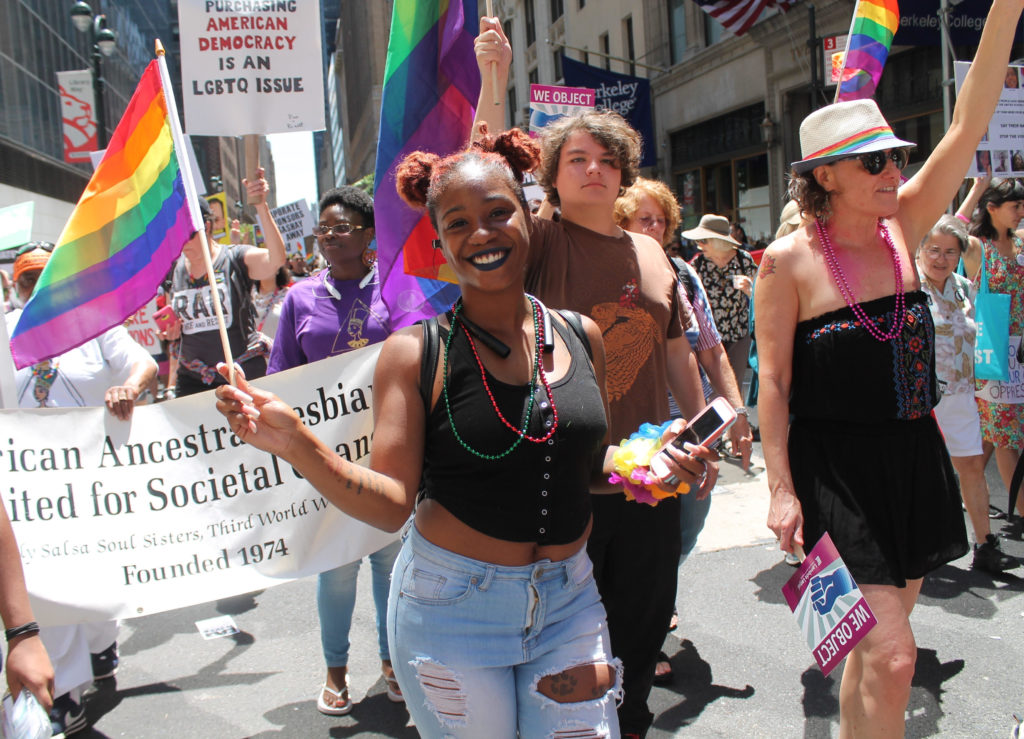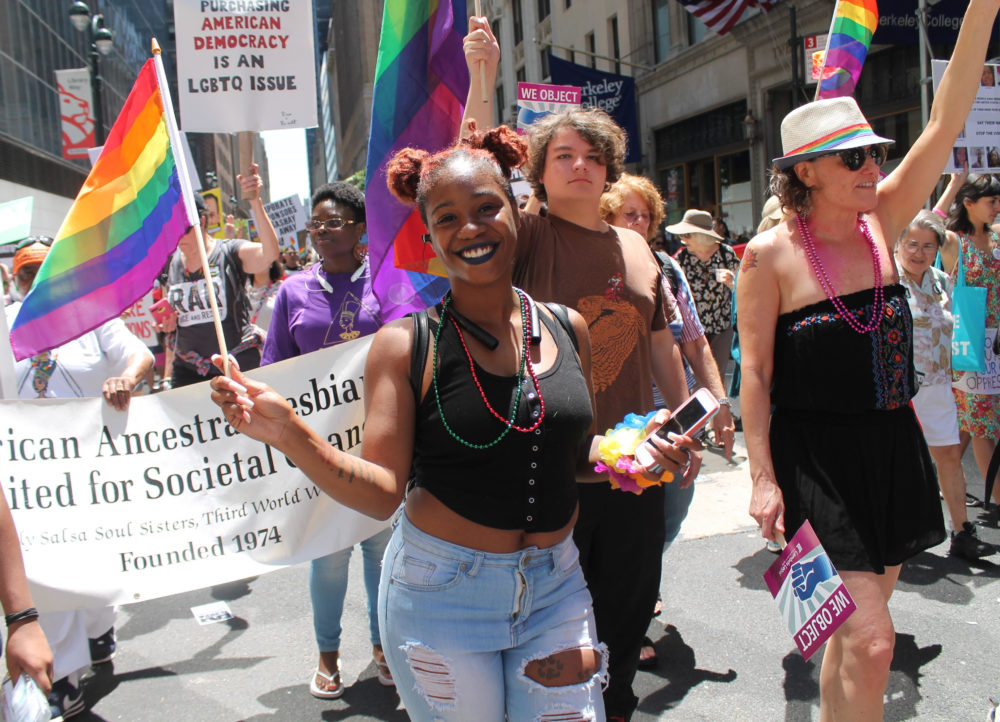Small acts of homophobia go unrecognized at NDSU

LGBTQ+ rights are improving, but there’s still work to be done.
SLUG: homophobia
DOP: 2-24-20
HED: Institutionalized Homophobia
SUB-HED: Small acts of homophobia go unrecognized at NDSU
PQ: We can recognize that hatred against members of the LGBTQ+ community has gotten better while also validating that those problems do still exist.
PQ: Standing up to other immorality with more immorality is not the habit of NDSU’s LGBTQ+ community, they take on ignorance with patience and grace. When others hate they do not lose their capacity for love.
BYLINE: Delaney Halloran
BYTITLE: Opinion Editor
CUTLINE: LGBTQ+ rights are improving, but there’s still work to be done.
PHOTO-CRED: Wikimedia Commons
Looking at the history of homophobia in this country, it’s easy to look at the state of things today and think, “Wow, America has really come a long way in accepting members of the LGBTQ+ community.” And thinking this is absolutely correct.
However, it’s problematic to think that homophobia isn’t still a pressing issue. We can recognize that hatred against members of the LGBTQ+ community has gotten better while also validating that those problems do still exist.
Just this year, I have witnessed two acts of homophobia within my own residence hall. A billboard dedicated to LGBTQ+ history month was vandalized so many times and to such an extent that it had to be covered with a large sign that read: “Hate happened here.”
On multiple occasions, the LGBTQ+ Safe Zone sticker which is on my door has been torn off. One time, I came outside to find someone trying to rip the laminated sticker in half.
It’s nice to imagine that NDSU is a fully welcoming place, but the truth is that small acts of homophobia are par for the course. My own familiarity with these acts is already substantial enough, and I am not openly gay with many of the people who go to NDSU. The circumstances for those students who are out and vocal about their sexuality are likely worse.
We can recognize that hatred against members of the LGBTQ+ community has gotten better while also validating that those problems do still exist.
In the past, homophobia was more obvious. Outward violence and discrimination were daily possibilities for individuals whose sexual identity was known to others. In fact, there is little data on hate crimes against LGBTQ+ people before 1969 because before that point there was little advocacy to recognize homophobia as a real problem.
Since that time, FBI Statistics have shown that there has been an overall decrease in hate crimes since 1969. While this is obviously a positive turn of events, since 2017, for the first time, hate crimes against LGBTQ+ individuals have increased (by five percent from 2016).
It’s important to remember too that the number of hate crimes is not reflective of the instances of homophobia. Instances of bullying, unreported violence and the small acts of homophobia like the ones frequently taking place on campus are rarely tracked and accessible in statistical form.
Individuals within this group experience hate against them in small daily acts. It may feel small to be called a derogatory name or manageable to see your door defaced. Yet these “small” acts slowly build until any feeling of safety is degraded.
Looking at NDSU, and much of the midwest, homophobia is still around, it’s just hidden. People internalize these negative feelings because it’s no longer socially acceptable to be outwardly bigoted, but it really doesn’t feel socially acceptable to LGBTQ+ individuals to be their authentic selves either.
There are clubs on campus, like Pride Alliance, which provide a safe space for NDSU’s queer community, but organizations like these don’t necessarily have the same flexibility for ostentation that other organizations do. Sororities and fraternities tabling in the union won’t get side-eye trying to recruit, but organizations promoting freedom of sexual orientation will.
Any negative feelings against organizations like these may not be vocalized, but to their members, they’re certainly felt.
Outside of clubs, it’s rare to see many open couples walking around campus. While couples may be seen in the union holding hands or downtown with their arms around each other, the likelihood that these couples are same-sex is relatively small in North Dakota. Even if the risk of injury is small, the social or emotional harm these couples face is real.
Standing up to other immorality with more immorality is not the habit of NDSU’s LGBTQ+ community, they take on ignorance with patience and grace. When others hate they do not lose their capacity for love.
It’s not just LGBTQ+ people who must stay hidden, but the homophobic people themselves who refuse to be seen. The evidence for why these actions are wrong is presented in the way that people never take responsibility for their homophobic actions. They would rather anonymously vandalize or leave rude messages on someone’s social media than let the NDSU community know what they’ve done.
Even knowing that these small acts of homophobia are wrong, people clearly see no reason to stop. They wouldn’t want their peers to know the hateful things they’ve done, and they’d likely be embarrassed to have their family and professors know what they’re capable of, but that shame is only enough to keep them from leaving a calling card, not from refraining to act in a bigoted manner.
The biggest takeaway here should be the stark contrast between the actions of homophobic people and their victims. These instigators of hate seem to carry an animosity against LGBTQ+ people with very little reason. They may try to use religion as an excuse (although I’ve distinctly remembered a bit about “loving thy neighbor”) or the offensiveness of homosexuality to their disposition, but these excuses are as ridiculous as they are hollow.
Homophobes openly despise a group of people who’ve done nothing to them except exist. They hate others, but the important point is that most LGBTQ+ people continue to refuse to reciprocate that hate. When someone is close-minded and awful, members of this community are understanding and hopeful for change. When someone acts with the intention of harm, members of this community respond by banding together and finding harmony.
Standing up to other immorality with more immorality is not the habit of NDSU’s LGBTQ+ community, they take on ignorance with patience and grace. When others hate they do not lose their capacity for love.
In an ever-progressive world, homophobia is more and more frowned upon every day. So, instead of retreating from those hateful ideals, people merely hide their identity when acting immorally. Even though homophobic actions are hurtful and dangerous, the truth is, these oppressive individuals have already shown their hand, and they are the weaker side.
LGBTQ+ community members at NDSU have gained a strength many others haven’t simply by making it this far in life. Some have been lucky, but many have endured bullying, ostracism or discomfort on the basis of their identity. At the same time, homophobic people have only shown their weakness and cowardice but acting out against a group of people merely asking for the right to exist.
Hate is still present, but it’s clear that the loving side is the stronger one.
